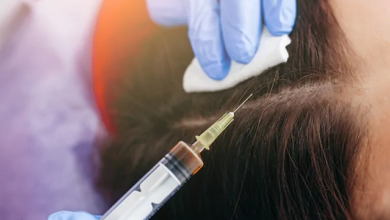Broken Bones and Other Injuries – the Impact of Motorcycle Accidents

Motorcycle accidents often lead to serious physical trauma, with broken bones and other injuries being some of the most common and debilitating outcomes. Unlike car drivers, motorcyclists face greater vulnerability due to limited protection, making their injuries often more severe and complex. In this article, brought to you by the allwellhealthorganic team, we dive deep into the types of injuries sustained in motorcycle crashes, focusing primarily on broken bones, their treatment, and other related injuries that can occur.
Understanding these injuries is crucial not only for victims and their families but also for anyone interested in road safety, healthcare, and legal implications following a motorcycle accident.
Why Are Broken Bones and Other Injuries So Common in Motorcycle Accidents?
Motorcyclists lack the physical barrier that cars provide, leaving them exposed to high-impact forces during collisions or falls. When an accident occurs, riders can be thrown off their bikes, hitting hard surfaces such as asphalt, vehicles, or roadside objects. This sudden and forceful impact often results in various injuries, with broken bones ranking as the most frequent.
Even with the use of protective gear such as helmets, gloves, boots, and padded clothing, the limbs—especially arms and legs—remain vulnerable. Riders instinctively use their arms to shield themselves during a fall, often causing fractures. Moreover, the road’s unforgiving surface can cause additional skin and soft tissue injuries.
Types of Broken Bones Commonly Seen in Motorcycle Accidents
Bone fractures in motorcycle accidents range from simple cracks to complex breaks that require immediate medical intervention. Understanding the types of fractures can help victims and caregivers anticipate treatment needs and recovery times.
Stable Fracture
A stable fracture is when the bone breaks but remains properly aligned. These fractures typically heal well with immobilization, such as casting or splinting, and require minimal surgical intervention.
Open (Compound) Fracture
Open fractures are serious injuries where the broken bone pierces the skin. This exposes the bone and internal tissues to the external environment, significantly increasing the risk of infection. Treatment usually involves surgery, antibiotics, and careful wound management.
Transverse Fracture
In a transverse fracture, the break is straight across the bone. This type of fracture is usually caused by a direct blow or impact.
Oblique Fracture
An oblique fracture occurs at an angle across the bone. These fractures often result from twisting or rotational forces during a crash.
Comminuted Fracture
This is a severe form where the bone shatters into three or more pieces. Comminuted fractures typically require surgery to stabilize and realign the bone fragments, often using plates, screws, or rods.
The Severity and Complications of Broken Bones
The consequences of broken bones vary widely, depending on the fracture type and location. Some fractures heal completely without long-term effects, while others can lead to chronic pain, limited mobility, or permanent disability.
- Recovery Time: Minor fractures may heal in weeks, but complex breaks often require months of rehabilitation.
- Surgical Intervention: Many fractures from motorcycle accidents necessitate surgical repair.
- Permanent Disability: In some cases, nerves and blood vessels around the fracture site can be damaged, leading to lasting impairments.
- Chronic Pain: Even after healing, some patients suffer from persistent pain or stiffness.
Other Serious Injuries Resulting from Motorcycle Accidents
Besides broken bones, motorcyclists frequently sustain a wide variety of other injuries. These injuries can complicate treatment and recovery, sometimes resulting in lifelong health challenges.
Burns
Accidents involving fire or contact with hot engine parts can cause burns ranging from minor to severe. Severe burns may require skin grafts and long-term wound care.
Road Rash
Road rash occurs when the skin scrapes against rough surfaces, leading to painful abrasions. These injuries can become infected, leave scars, and in severe cases, cause nerve damage.
Internal Injuries
Impact forces can cause trauma to internal organs such as the liver, spleen, or lungs. Internal bleeding and organ damage often require emergency surgery and can be life-threatening if untreated.
Eye and Facial Injuries
Despite wearing helmets, motorcyclists can suffer blunt trauma or debris injuries to their eyes and faces, risking vision loss and breathing difficulties.
Severe Cuts and Bruises
Motorcycle crashes frequently cause deep lacerations and bruises, requiring stitches and extended healing periods.
Soft Tissue and Nerve Damage
Tendons, ligaments, muscles, and nerves can be stretched, torn, or compressed, potentially leading to long-term weakness or paralysis.
Spinal Cord Injuries
Spinal injuries can cause chronic pain, limited mobility, or even paralysis, depending on the severity and location of the damage.
Traumatic Brain Injuries (TBI)
Although helmets reduce the risk, they do not eliminate it. TBI can range from mild concussions to severe brain damage, with potentially life-altering consequences.
The Legal and Medical Challenges Faced by Motorcyclists
Motorcyclists often face unique challenges after accidents, particularly concerning insurance and medical claims. Unlike many car drivers, they may not automatically qualify for no-fault insurance benefits, making it essential to understand their rights and options.
Navigating Insurance Claims
Obtaining fair compensation for medical bills, lost income, and pain and suffering can be difficult. Insurance companies sometimes offer low settlements that do not cover full damages, requiring victims to negotiate or pursue legal action.
The Importance of Legal Support
Given the complexities of motorcycle accident claims, consulting a skilled motorcycle accident lawyer can be crucial. These professionals help victims understand their rights and navigate the legal system effectively to ensure just compensation.
Recovery and Rehabilitation from Broken Bones and Other Injuries
Recovery from motorcycle accident injuries is often a long and challenging process, requiring patience, proper medical care, and rehabilitation.
Medical Treatment
Initial treatment focuses on stabilizing injuries, preventing infection, and managing pain. Surgery is common for severe fractures and internal injuries.
Physical Therapy
Physical therapy plays a vital role in restoring movement, strength, and function. Customized rehabilitation programs help patients regain independence and quality of life.
Psychological Support
Injuries and their aftermath can lead to emotional distress, anxiety, or depression. Psychological support and counseling are important aspects of comprehensive recovery.
Prevention Tips to Reduce the Risk of Broken Bones and Other Injuries
Prevention remains the best strategy to minimize the risk of injury. Motorcyclists can take several proactive steps to protect themselves:
- Always wear certified protective gear, including helmets, gloves, boots, and padded jackets.
- Practice defensive riding and obey traffic laws.
- Maintain your motorcycle in good condition.
- Take motorcycle safety courses to improve skills.
- Avoid riding in dangerous weather or poor visibility conditions.
Conclusion
Broken bones and other injuries are unfortunate but common consequences of motorcycle accidents. Understanding the nature of these injuries, their treatment options, and the legal complexities that follow is essential for victims and their families. The allwellhealthorganic team is dedicated to providing accurate, well-researched, and up-to-date information to help readers navigate these challenges.
If you or a loved one suffers from motorcycle accident injuries, seek prompt medical attention and consult legal experts to protect your rights and health. Recovery is often difficult, but with the right support and knowledge, victims can work toward healing and reclaiming their lives.



